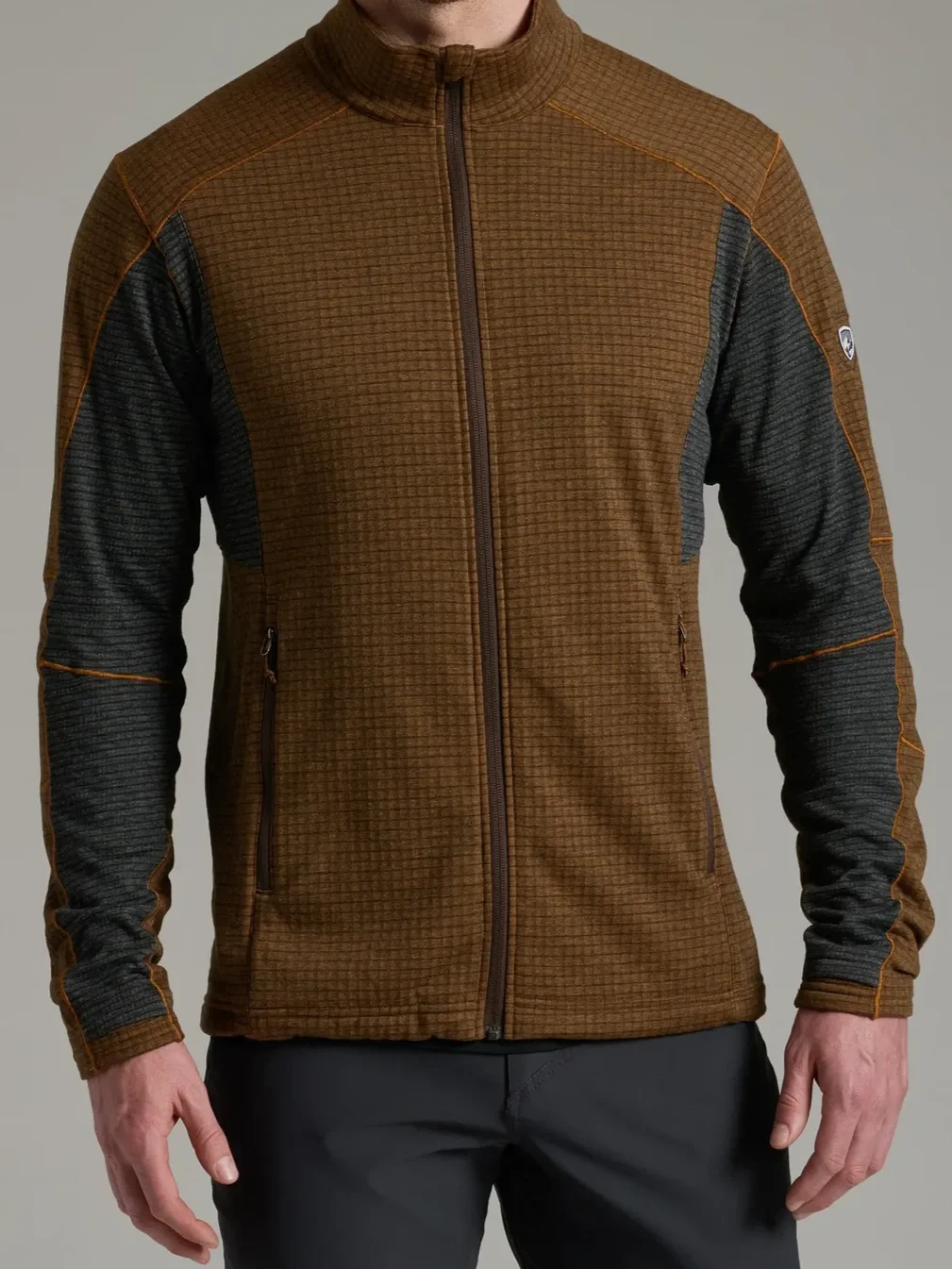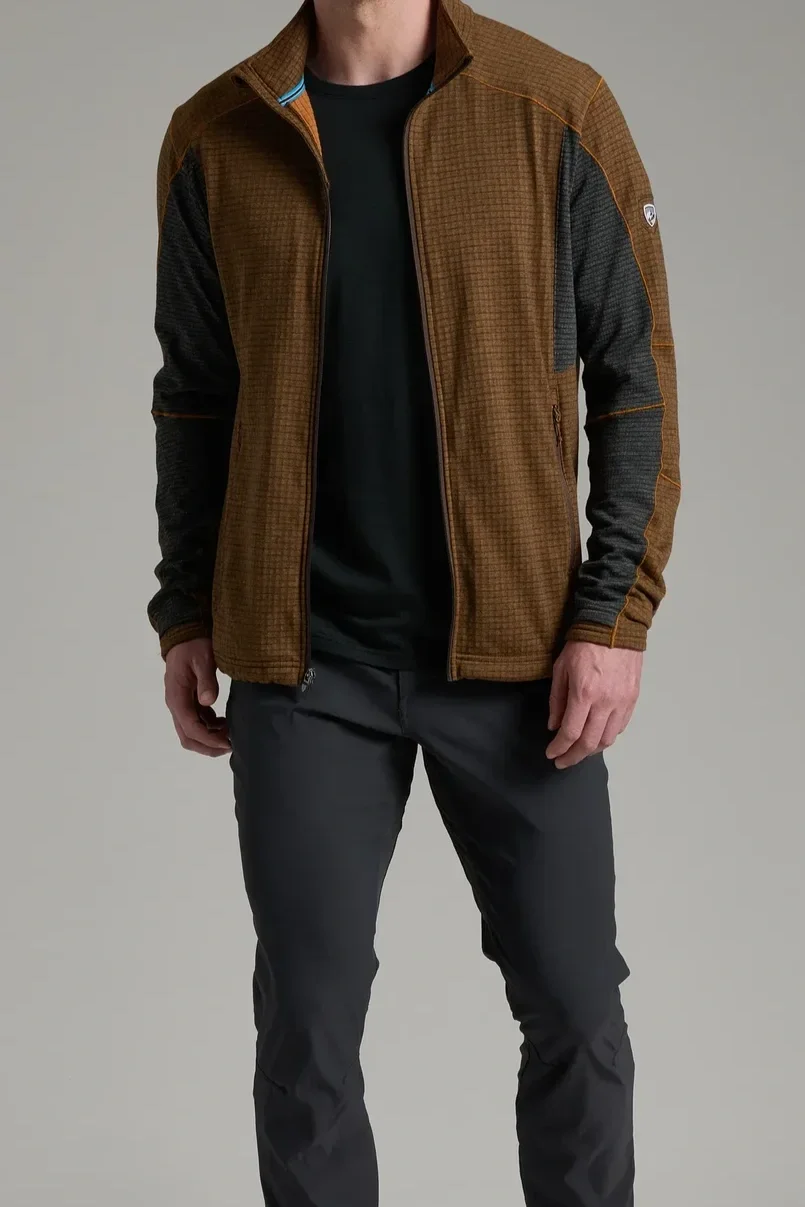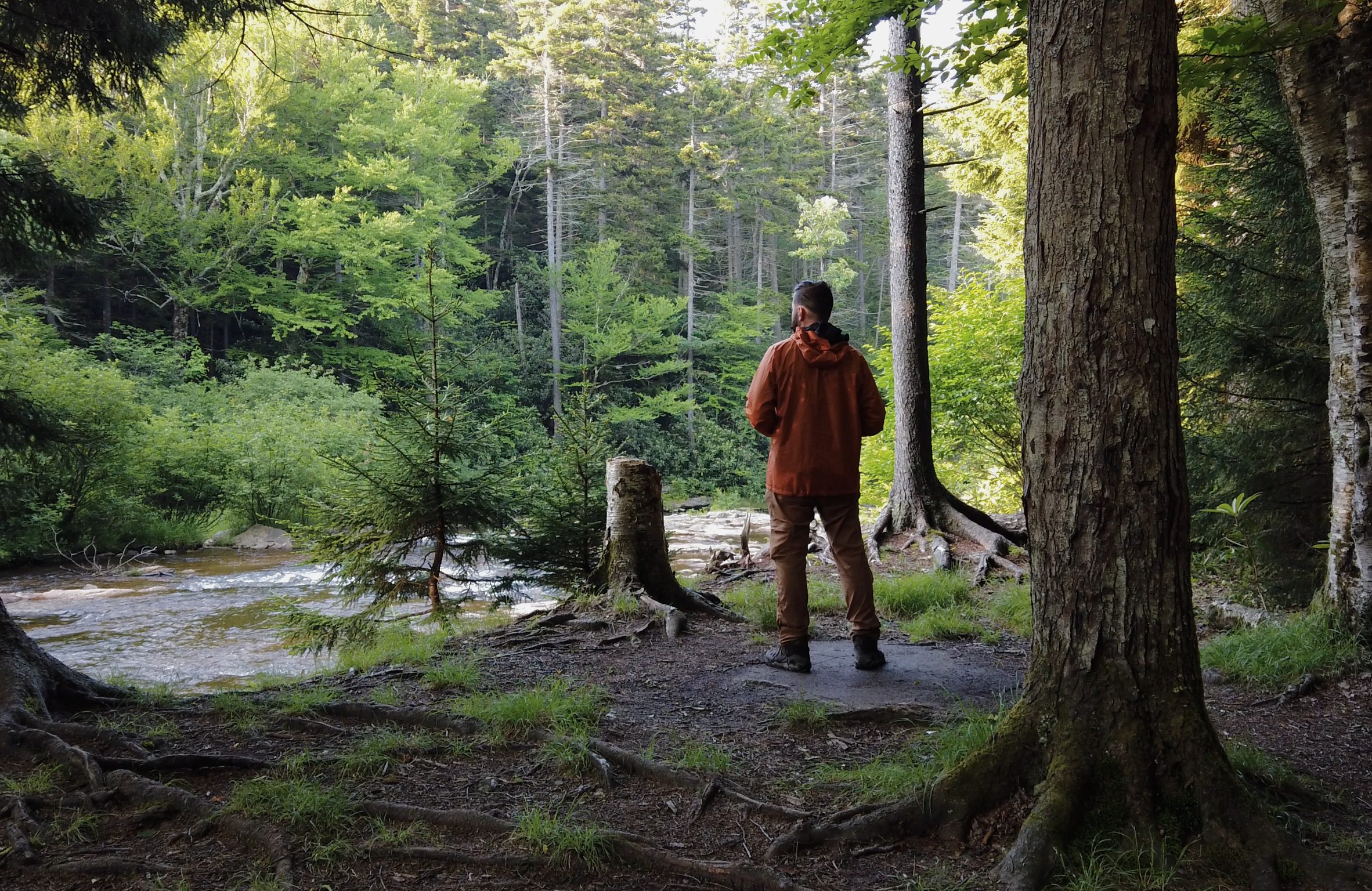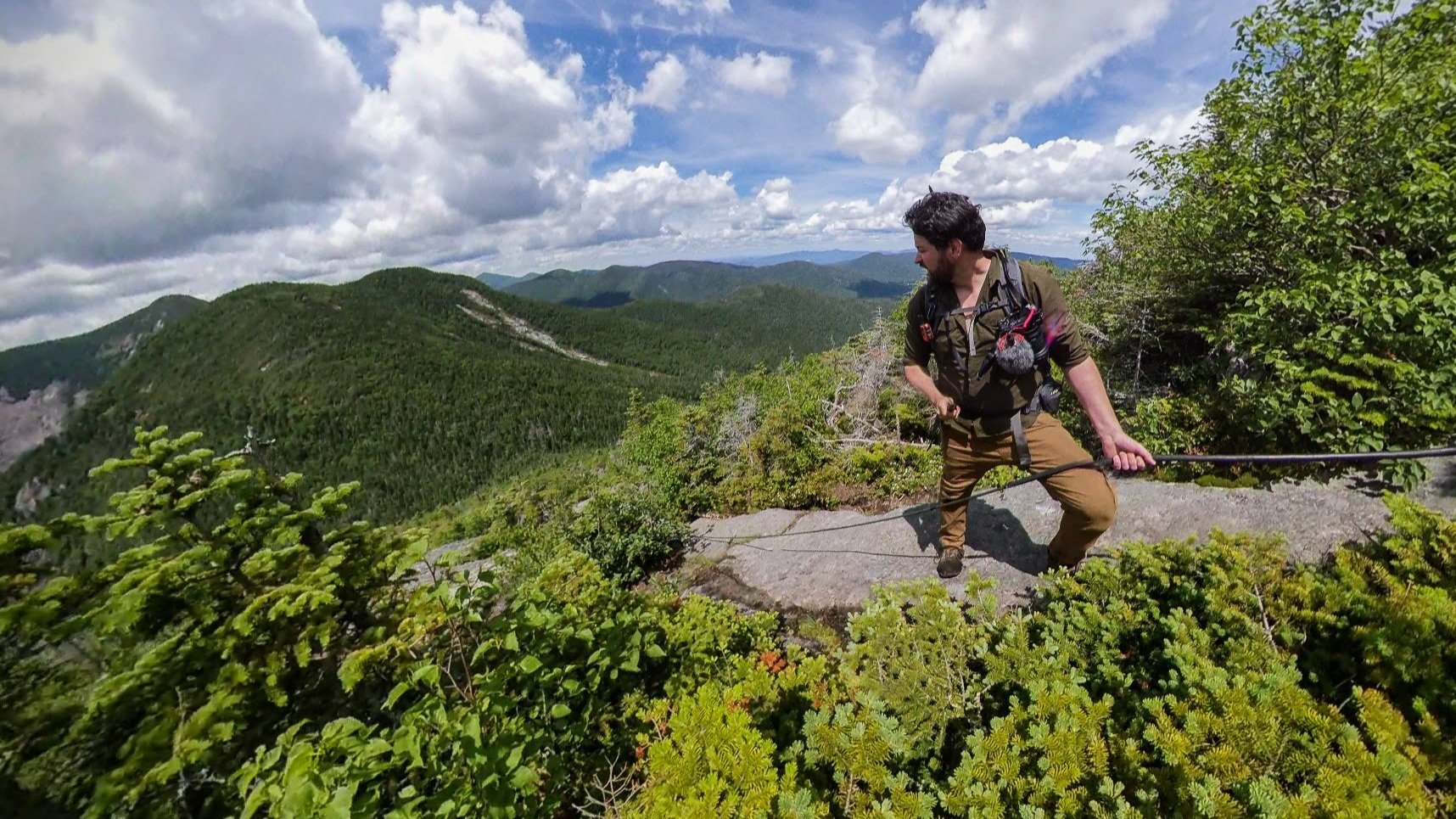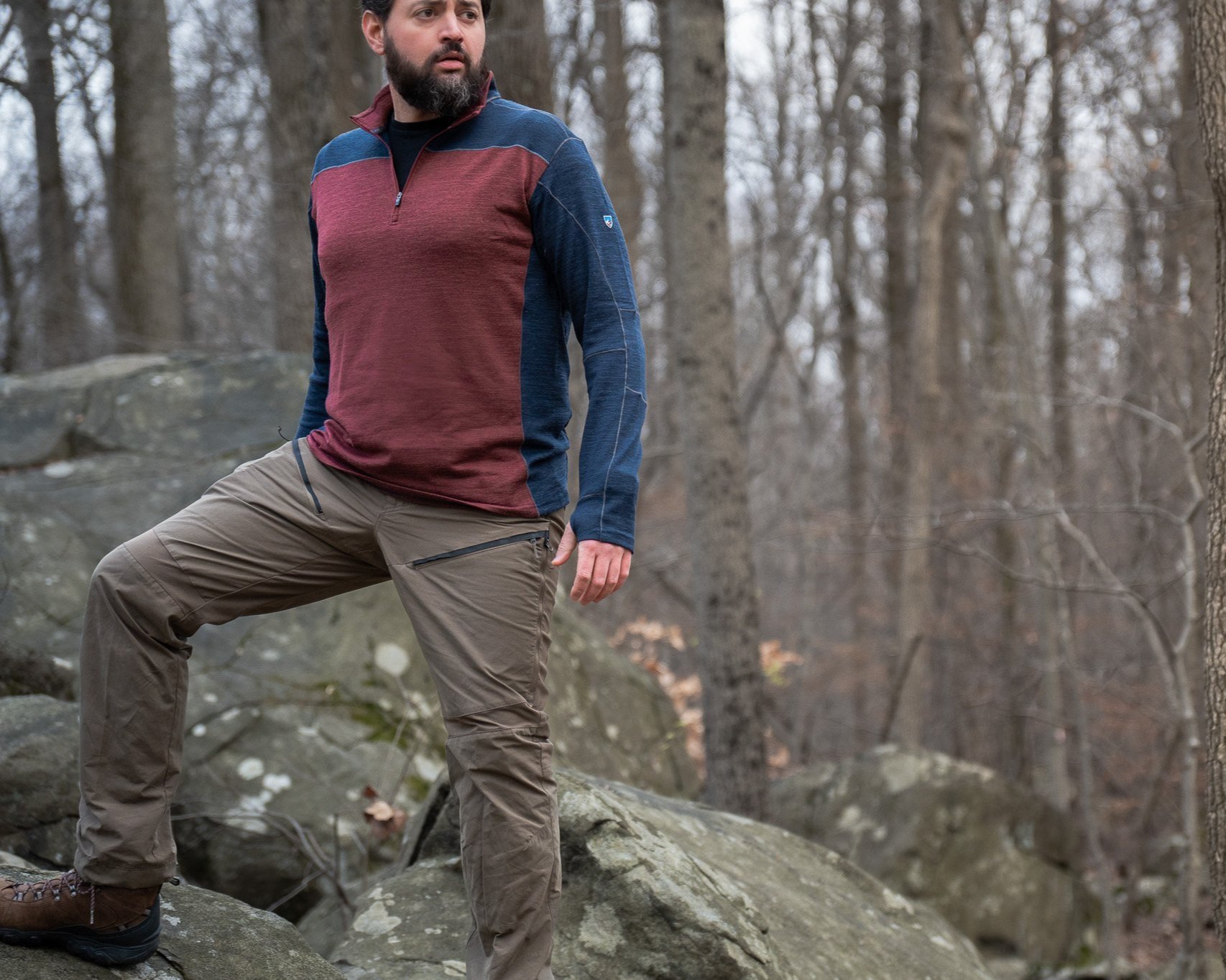KÜHL’s Reactiv™ Grid Fleece vs The Patagonia R1: Finally a Worthy Rival?

For decades, Patagonia’s R1 has set the standard in the outdoor layering world. Climbers, hikers, and alpinists, and amateur adventurers like myself have sworn by its balance of warmth and breathability, making it almost synonymous with “technical fleece.” But KÜHL is now aiming to shake that dominance with its most advanced line yet, the Reactiv™ Grid Mid-Layer Grid Fleece, built from Italian graphene-infused material.
I have been a KÜHL fan for a while now. I’ve fielded and tested their gear from the peaks of the Canadian Rockies, to the glaciers of Iceland, and across the deserts of Jordan. They make great gear that is technical and functional while at the same time looking pretty damn good. So when they reached out to me to test out this new midlayer graphene grid fleece, I jumped at the chance.
Trail Testing the Reactiv™
So there I was, packing up my gear to set out for the Kittatinny Ridge on the Appalachian trail and put it to the test. I’m not going to lie. It felt a little weird not packing my Patagonia R1 this time. For years, that thing has pretty much been my security blanket and on chilly mornings and in camp. But KÜHL claims this new Reactiv™ series adapts to you. Warms when still, cools when moving with graphene-infused wizardry and Italian fabric. Bold claims for a brand better known for tough pants and mountain-casual flannels.
Time to find out if it's the new king or if it’s all marketing hype.
First Impressions
The Reactiv Grid is sleek, not flashy. No alpine neon. No gear-nerd flair. Just a clean, form-fitting fleece with a brushed grid interior softer than anything in the R1 family. It feels like something you’d wear around a campfire, but functions like something technical you’d trust on a cold ascent. I also noticed the dual color pattern to be a bit flattering in its design.
The standout detail? Lighter, extra-breathable fabric under the arms, like built-in pit zips. A small thing, but brilliant. This is where most fleeces fail, building up heat and sweat with no escape. On the ridge, where I moved from 40° trailhead chill to 70° ridge mid-day sun, that breathability mattered.
Thermal Regulation:
KÜHL wasn’t bluffing. This fleece seems to listen to your body’s needs. On the climb out of Culvers Gap, the temperature rose fast. Normally, I’d be rolling sleeves and shedding layers. Instead, the Reactiv dispersed heat fast through the underarm zones while holding warmth at the core. By the time I reached the ridge, I hadn’t touched the zipper once.
Camp Comfort:
Later that night in camp, by the light of my jet boil, I was still in the same layer. No need to throw on a puffy unless temps really dropped. You know that feeling you get when you're sitting up a long hike, and as soon as you drop your pack, that cold sweat chill sets in. Almost magically, it didn’t seem to be much of a problem here. This is what makes a piece versatile, it doesn’t punish you for standing still.
Backpacking Interface:
The outer face held up well against pack straps, no pilling or snagging. The fit is articulated but never tight, which meant no bunching under the hip belt and no chafing when moving. The stealthily hidden thumb loops helped keep sleeves anchored during the morning push.
Photo courtesy of KUHL.com
How It Compares to the R1
Warmth and Thermal Regulation:
The R1 breathes well, but is less dynamic, whereas the Reactiv is adaptive and body-zoned, which I like. The R1 may be just a hair warmer when hanging around camp, but the versatility of the Reactiv fleece means not having to stop and add/shed layers as often.
Weight:
The style of R1 that is most comparable to the Reactiv fleece I tried is listed on Patagonia’s website as 343 g (12.1 oz). KÜHL lists there’s as 200 GSM (grams per square meter). So it’s hard to directly compare unless you’re a mathamagician, but holding both of them in my hands in my very unscientific method, the Reactiv feels lighter.
Durability:
The R1 stands the test of time. I have had it with me on every adventure for the past seven years and it is still holding up. The Reactiv is too new to compare, but the construction and materials seem high quality, so this one is a toss-up.
Fit and Style:
Patagonia fits true to size for me, whereas KÜHL runs just a bit small. In the R1 I'm a Large like most tops I wear, whereas in the Reactiv I’m an XL, which is usually the case for me with all KÜHL gear (I am 6ft, 210lbs for reference). As far as style, the R1 is technical first, and looks great on the side of a rockface or as an insulating layer under a shell. The Reactiv is definitely more stylish and looks just as good on the trail as it does getting that post-hike meal at the local diner on the way home, or bumming around a mountain town coffee shop. It’s the little details, like the form-flattering two-tone torso. Or the fact that the thumb loops are constructed in such a way that when not in use, they flatten and disappear as part of the sleeve.
Comfort:
We’re splitting hairs here, as it’s hard to beat the almost pajama-like feel of my R1 in camp, but I will admit the Reactiv does feel softer and smoother on the skin. It’s a midlayer, but I would also have no problem using this as a sleep shirt, or as a laundry-day shirt for a through-hike.
Price:
It seems KÜHL knows the market it’s trying to get into, and the non-hooded zip-ups of both the Patagonia R1 and the KÜHL Reactiv fleece are currently priced the same at $169.
Photo courtesy of KUHL.com
Final Thoughts
The KÜHL Reactiv Grid Full Zip is a serious step forward for KÜHL, and a genuine rival to Patagonia’s R1 lineup. If the R1 is a climber’s classic, the Reactiv feels like the modern backpacker’s upgrade
It surprised me. I expected a decent midlayer, but what I got was a highly versatile piece of gear that kinda blurred the lines between layers. It kept me warm when I needed it to, and easily shed the heat off when I was on the move, reducing the need to stop and shed gear. More than just an R1 clone, this Reactiv™ Mid-Layer Fleece stands upon the shoulders of giants and takes the innovation just a little bit further.
Next time I prepare for a one-layer kind of trip, I know what’s going in the pack.
(Photos courtesy of KUHL.com and Patagonia.com)
